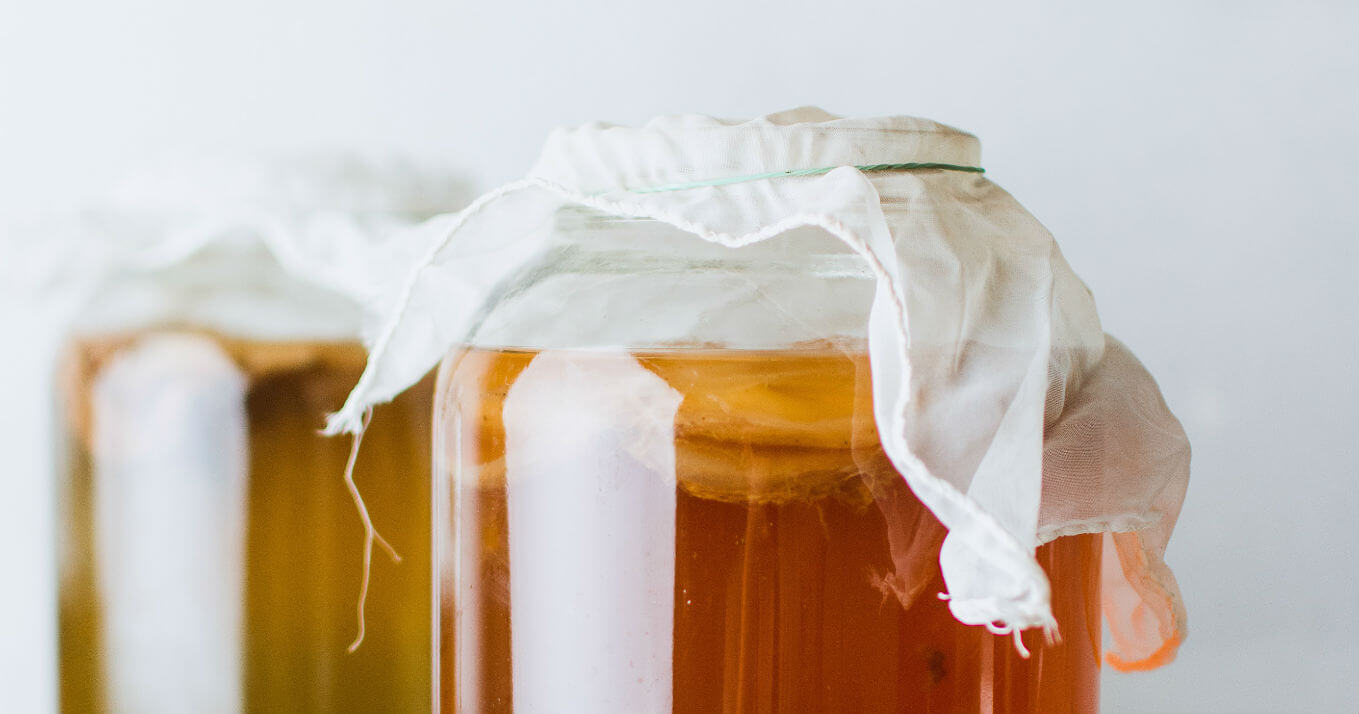
When I originally published my Kombucha Tea Questions & Answers post, I believed I’d definitively answered all the most frequently asked questions about kombucha tea. But then YOU happened.
You commented with even more questions. Today, I’ve invited Hannah Crum from Kombucha Kamp to answer these new questions. The fine folks over there are my Kombucha experts, the people I ask whenever I need kombucha answers. Thank you, Hannah, for lending us your wisdom!
SCOBY Hotel & Storage
“There is a lot of confusion over how to store SCOBYs between batches; can you clarify?”
KKamp: Absolutely, this is one of the most commonly passed-down misconceptions about Kombucha. The SCOBY and starter liquid for future batches should never be refrigerated as there is no advantage and storing the cultures at such a low temperature for extended time puts the culture into a deep sleep, which leads to inferior tasting Kombucha and oftentimes, mold.
If they’ve only been in the fridge for a few days, they should do much better than those stored for weeks or months but, even if the brew does not mold, the Kombucha that brews may not taste great and it is still susceptible to mold in the second or third batch after being revived.
As such, we always recommend starting a SCOBY Hotel with your extra cultures and mature Kombucha, then storing it at room temperature. A SCOBY Hotel is a way to safely store all your extra SCOBYs so that if something goes wrong, you will always have a back up, and therefore a lifetime supply. For long term storage of a SCOBY Hotel, add sweet tea from time to time to compensate for evaporation. The Hotel may also act as a source of extra strong starter liquid.
Too Sour Kombucha
“Anyone who brews Kombucha has had a batch go too long and get too sour. Has it then spoiled and become unsafe to drink? Can that be salvaged or used in any way? And if the Kombucha is turning sour quickly, how do we combat that? Seems like a waste not to drink it.”
KKamp: Well of course the first use for overly sour Kombucha is to make that SCOBY Hotel! But keep in mind, pure Kombucha will never spoil; the low pH provides protection against invasion from harmful microorganisms. Once flavorings have been added, there is a chance for off flavors to develop in the bottle, and of course it can become too sour to enjoy over time depending on your personal preference. But unless you see mold, it is not spoiled.
If you find the flavor of your KT to be too sharp or sour, you can try a few simple ways to adjust the flavor.
- Dilute your KT with water or juice. — This will shift the pH and smooth out the flavor but will still give you all the benefits; think of it like lemon in your water.
- Shorten your brewing cycle. — If it is getting too sour to drink, then start tasting it earlier in the cycle.
- Flavor your booch. — Hibiscus and Elderflower may increase the tartness slightly so bottle age them longer before drinking (a few weeks). Chamomile imparts an apply flavor and when paired with lavender is quite nice. Using fruit juice or fruit pieces can also add a nice flavor to your KT and help increase the fizz. Try a variety of flavors until you find ones you like.
If the flavor is still too intense, overly sour Kombucha has literally 100’s of uses around the house and in a variety of cooking and beauty recipes.
Heating Kombucha
“What about heating the Kombucha brew during fermentation, overheating the brew or even re-heating the finished Kombucha to enjoy as a hot drink: What’s the best temperature for Kombucha?”
KKamp: The right conditions are always important when fermenting. Traditional Kombucha is an acetic acid ferment, with gluconacetobacter as the dominant bacteria, and therefore prefers temperatures of 75-85F (with 78 – 80F being the “sweet spot”), which is a warmer brewing temperature than many of our lactobacillus-dominant friends like kefir and jun.
However, the Kombucha SCOBY is a hardy organism that can withstand brief exposures to extreme temperatures – of a few hours to a day or two, both hot and cold. Sustained temperatures of over 108 degrees are required to do damage to the culture and while we certainly do not advise freezing the Kombucha culture, if it arrives cold or frozen due to shipping conditions, it will revive with a brief rest period of 24-36 hours at room temperature.
What happens if the one brews at lower temperatures? Generally temperatures between 65 – 75 produce a safe, drinkable beverage over time, though it may lack the apple-y sour bite from higher temperature fermenting or it may take on a flatter, more earthy flavor. Most importantly, brewing time lengthens considerably. Attempting to ferment at lower than 64 degrees may produce a weaker beverage or may be susceptible to mold as the bacteria get “sleepy” and have a difficult time protecting themselves at the low temperature.
Where and how that heat is applied is also important to consider. Because the yeast desire a rest period after consuming the sugar early on and do so by falling to the bottom of the brew, heating from the bottom can cause overstimulation, resulting in weak bacteria or off flavors.
Finding a warmer spot in the kitchen, wrapping the brew in a towel or blanket or placing next to a working appliance are some ways to increase the temperature. If additional warmth is needed, consider a heating element designed to work from the sides for optimum brewing conditions.
As for heating Kombucha to consume warm, the healthy acids will remain but some of the probiotic effect will be compromised, though warming gently to 100-105F will retain more beneficial parts of the Kombucha, and is made more delicious with the addition of a cinnamon stick or spoon of honey.
No Baby SCOBY Growing
“If you’re brewing batch after batch, and it seems to be fermenting, and maybe even getting carbonated, but no new SCOBY is growing, what does that mean?”
KKamp: If making Kombucha at home but no new SCOBY is forming, it probably does not have the proper bacteria balance to be considered real Kombucha (note: as long as you did not see mold, which would have been fuzzy and dry and sitting right on top of the brew, looking like bread mold, it was safe to consume).
The most common types of SCOBYs that fail to produce babies are dehydrated SCOBYs and refrigerated SCOBYs, as bacterial activity has essentially been reduced to near nothing by these unfriendly “preservation” methods, leaving behind essentially a yeast drink.
Just like any food one prepares at home, the ingredients make all the difference in the final product. Full strength Kombucha cultures and starter liquid are critical to the power of the brew, and when combined with proper temperature creates the signature sweet/sour flavor of well-brewed, balanced Kombucha. Many people become disillusioned and never know that their starter culture is to blame, instead blaming themselves for “failing at Kombucha.”
SCOBY Growing In The Bottle
“I’ve heard from readers who are freaked out when they find a small SCOBY growing in their flavored Kombucha that they intend to drink. That’s totally normal, right?”
KKamp: Here’s the opposite problem, right? Absolutely, those are the beginnings of new SCOBY growth and are totally normal. When flavorings are added in the second ferment stage, the sugars reactivate the yeast and bacteria into production mode, though because there is not as much sugar the cycle is shorter. This also produces the carbonation that occurs in the second ferment stage, as the yeast make CO2, carbon dioxide, as a byproduct of consuming the sugar. You can choose to strain out the little SOCBYs or drink them down for a small dose of bacterial cellulose. We call them oyster shooters. 🙂
Herbal or Decaffeinated Kombucha
“We get a lot of comments from people interested in making decaf or herbal Kombucha. Is this possible and how?”
KKamp: First, in regards to caffeine and Kombucha, it should be noted that only a few tea bags are used to make a gallon of sweet tea, the base for Kombucha, meaning the caffeine concentration is already lower than a typical cup of tea. Second, the caffeine in tea is not the same as the caffeine in coffee, owing partially to the presence of L-theanine, which provides a relaxing effect for the organism.
During the fermentation process, Kombucha does consume some of the caffeine from the tea (there is debate over this), but more importantly the amount varies greatly based on your tea recipe, steeping time and brewing time, among many other factors. Many concerned about caffeine intake report no issue with consuming Kombucha, even with dinner. That said, every body is different; only you can decide if Kombucha agrees with your organism.
Still want to make 100% caffeine free Kombucha? No problem! It will require a little extra work but it can be done. Kombucha needs real tea (camellia sinensis) to survive over time, that is a requirement. However, we can substitute herbals successfully for a limited time to make Decaf Kombucha. Similarly, using flavored teas or tisanes is an option as long as that SCOBY does not go back into your primary SCOBY Hotel, keeping your backups safe from issues.
The easiest way to get started brewing 100% herbal Kombucha is to alternate batches between real tea (camelia sinensis) and herbal tisanes while using liquid from the SCOBY Hotel for the next batch instead of using the herbal Kombucha as starter. In most cases, this method is enough to prevent contaminating the SCOBY Hotel with oils or anything to compromise the pH.
However, long term the best method is to create a separate “Herbal Hotel” that hosts the SCOBYs used to make Herbal Kombucha so that if they go bad you can use another from your main SCOBY Hotel to start with herbal Kombucha again. Just make sure to always feed the Hotels real tea and sugar to keep the SCOBYs healthy, then use the herbal tisane mix you like to make the batch.
Another option is to blend herbals with real tea to create a lower caffeine tea/tisane mix, naturally lowering overall content but nutrifying the culture at the same time. Experiment to find a method that works for you.
Metal or Plastic Contact with Kombucha
“There is also confusion over what kind of metal and plastic can touch Kombucha, or even when it is safe to use these materials. Do we need to be worried about this?”
KKamp: As with most things, yes and no. Nearly every commercial Kombucha available at the store is fermented in either 304 or higher grade stainless steel or commercially brew safe plastic, so in some ways these concerns are overblown. Most homebrewers are choosing ceramic (really just a thin layer of glass on an opaque material), stainless steel, or glass for neutral flavor while oak barrels offer a unique brewing/flavor experience.
However, let’s draw a bright line here between a brewing vessel, which must be vetted completely, and casual contact with strainers, spoons, etc., which is not a major cause for concern. Also not a cause for concern are the pot used to make the hot tea and sugar mix prior to combining with the SCOBY or starter liquid: this can be made of any material as it does not touch the Kombucha. It is only constant contact with unsafe materials, for days or weeks at a time, that can cause an unsafe brew.
That said, we hear nearly every day from new homebrewers who are inadvertently using unsafe vessels for making Continuous Brew Kombucha, often because of low grade plastic or plastic coated spigots, or sometimes brass or other unapproved metal, that cannot withstand the high acidity of Kombucha. Specifically, these Consumer-Grade spigots are usually semi-hard plastic, sometimes with a “metallic” paint or fired coating that can erode slowly over time, seeping into or even chipping off into the brew. Even without a coating, most of these spigots are not made for such brewing conditions and should be avoided. The exception are approved plastic spigots such as the high quality American made Tomlinson spigots.
New Homebrewer Detox
“What if you’re getting headaches or stomach trouble from the Kombucha? As a homebrewer, should we be concerned?”
KKamp: Of course we are not doctors and cannot provide medical advice which should be obtained from your healthcare provider. That said, nothing you are describing sounds particularly unusual for some new homebrewers. Without knowing the source of the SCOBY culture, seeing pictures or hearing anything else strange about the brew, as long as it tastes fine and there are no signs of mold, which would be dry and fuzzy, sitting on top of the culture and look just like bread mold, it should be safe to drink.
Most likely is that a Herxheimer Reaction or “healing crisis” may be occurring, which just means that the toxins are leaving the body and putting up a fight as they go. Here are a couple of videos on the subject that may help.
Herxheimer Reaction Example – Detoxification of Poison Oak Rash through contact with Kombucha Cultures
How Much Kombucha Should I Drink?
And finally, a follow up question many people have: Is It Possible To Drink Too Much Kombucha?
Want to know where to buy kombucha brewing supplies and a SCOBY?
 Check out the Kombucha Kamp Store. Hannah sources the absolute BEST of everything you need to make a reliable, consistently tasty kombucha brew.
Check out the Kombucha Kamp Store. Hannah sources the absolute BEST of everything you need to make a reliable, consistently tasty kombucha brew.
Kombucha Kamp is the #1 kombucha site in the world (true by the numbers and reputation). The site is run by Hannah Crum, the beautiful and intelligent woman who answered all of today’s questions!
She calls herself the Kombucha Mamma, and for good reason. Kombucha Kamp has the best and most complete repository of Kombucha information I’ve ever seen. I signed up for her free kombucha tips and learned quite a bit I didn’t already know, even after years of brewing kombucha at home.
Want instructions for how to make kombucha tea in a print-friendly format?
I’ve created a handy, easy-to-follow, print-friendly tutorial for you!
Want to know more about kombucha tea?
Check out these other articles on kombucha tea I’ve written:
- Kombucha Tea: How to Make Kombucha
- Kombucha Tea Questions & Answers Part One
- Kombucha Health Benefits
- How to Grow a Kombucha SCOBY
- Kombucha SCOBY Experiment
- Why Choose the Continuous Brew Method of Making Kombucha
- Is Kombucha Safe When Pregnant or Nursing?
 |

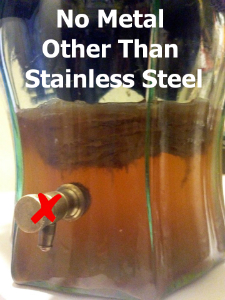
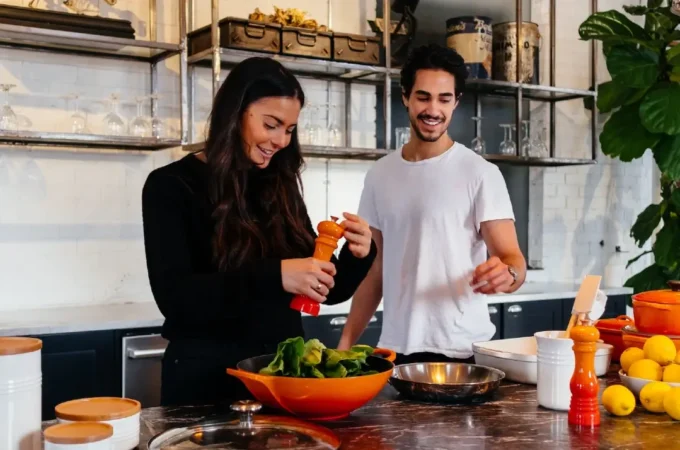

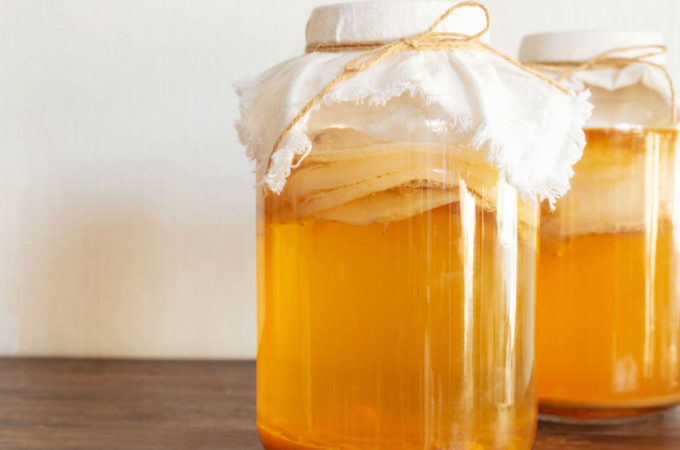
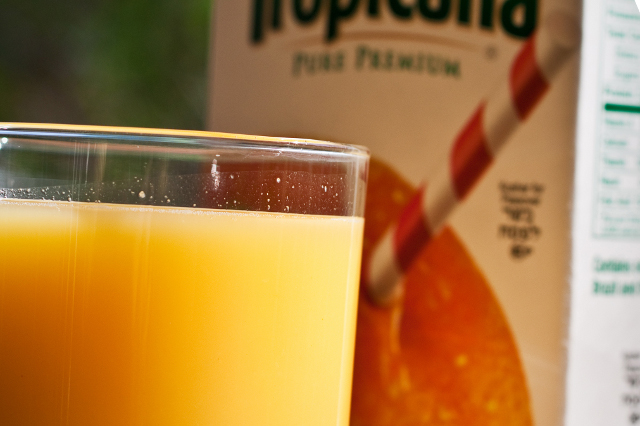
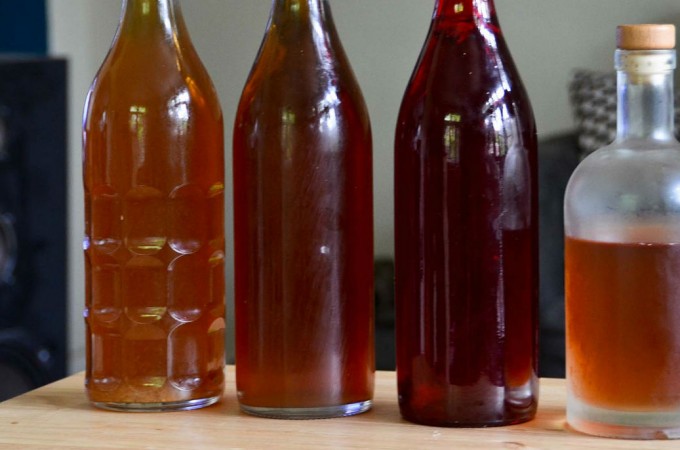
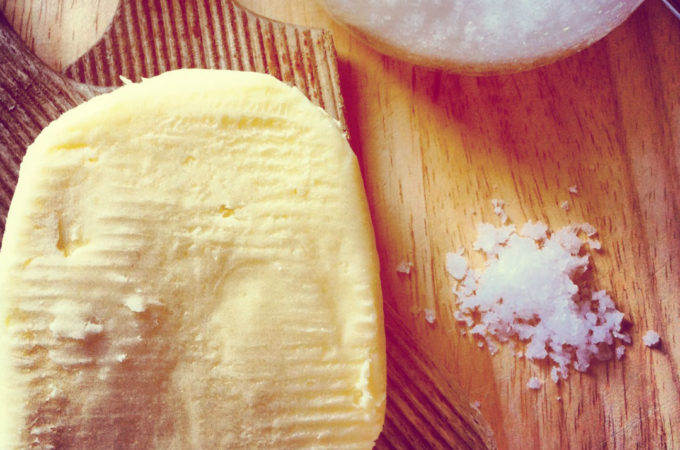
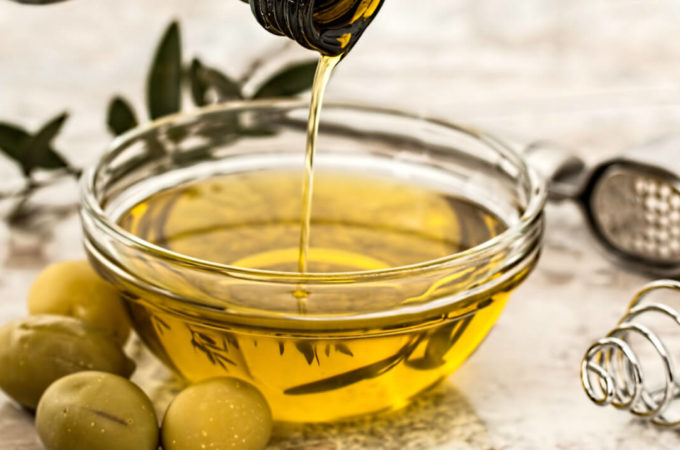
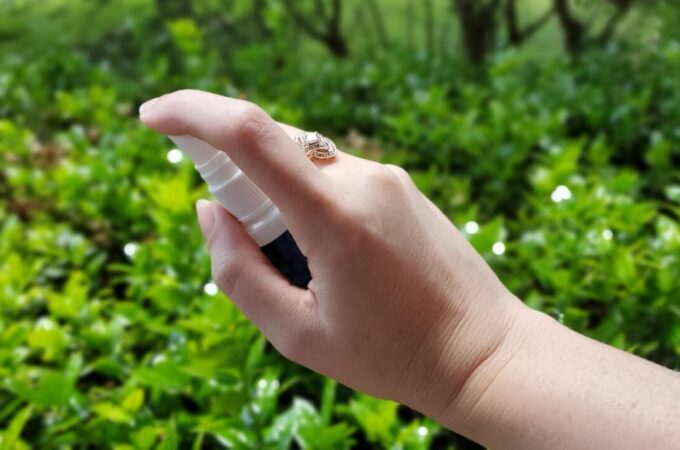
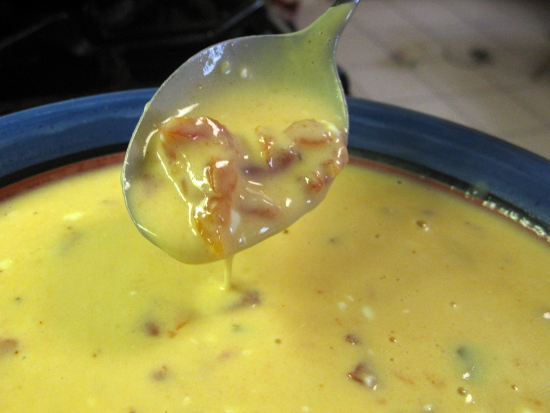
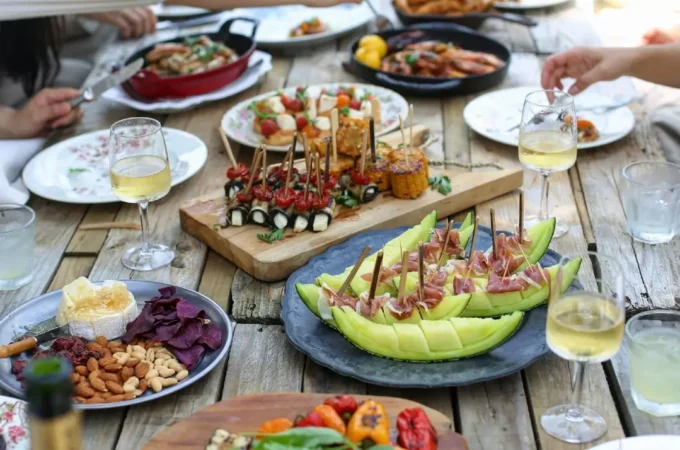


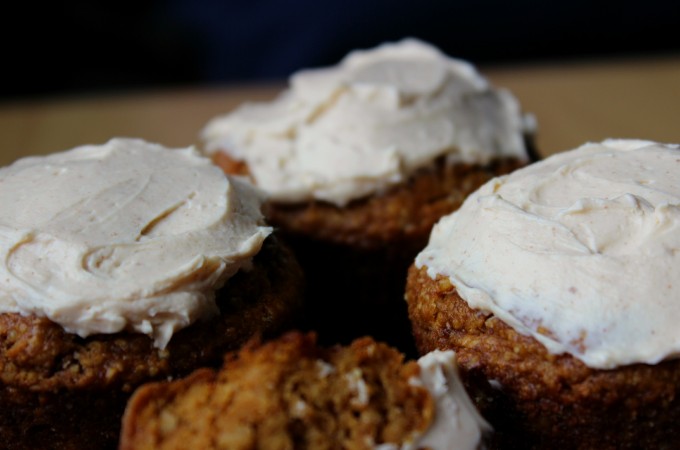
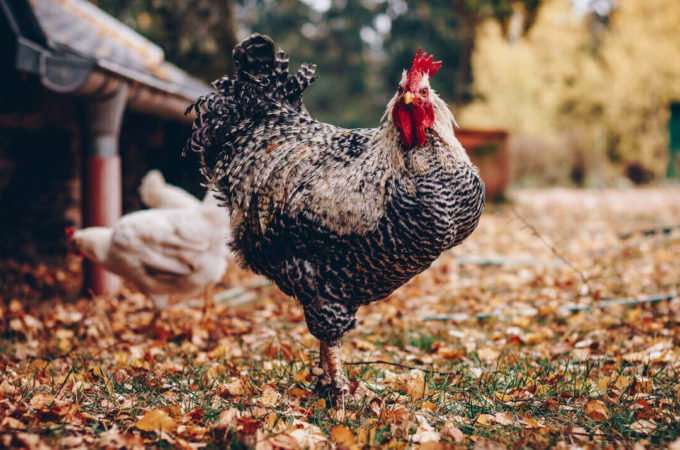
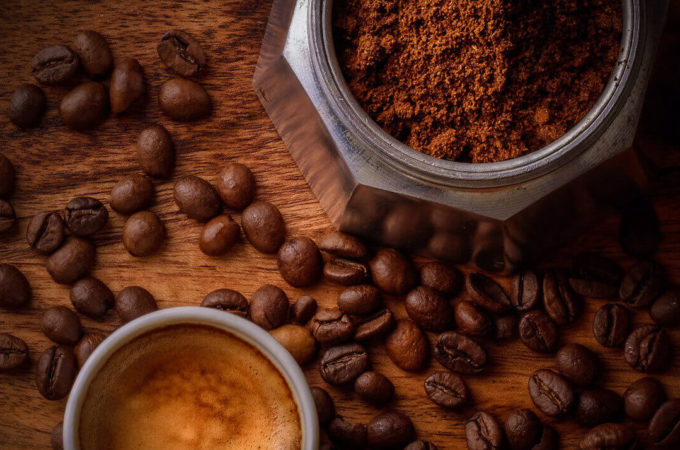
Still didn’t answer my question, lol. Not your fault, i didn’t send it to you! I have gotten a scoby twice from the lady we buy our kombucha from, and both times when I tried to brew it, there were worms! I’m thinking it must be something I’m doing, because the finished kombucha I buy from her NEVER has worms, and she was surprised when I told her about them. She provided a free replacement scoby, but, again, worms. It’s really gross. Where could they be coming from??
Hi Alice – sounds like vinegar eels – A vinegar eel is a gross but harmless (to humans) nematode that lives in vinegar. They are often raised to feed baby fish. They are harmful to Kombucha because they feed off the bacteria and therefore destroy the SCOBY. However, they are very rare and while one needs to be vigilant of them, you are unlikely to encounter them if you get your SCOBY from a reliable source and don’t add vinegar to the brew (which is unnecessary with a real SCOBY and starter liquid).
The other possibility is that fruit flies are getting in through a loose cover and they are laying eggs which hatch into fruit fly larvae. Again a proper cloth cover will help with this. Hope that helps! 🙂
I can answer that one! 🙂
Those my friend are vinegar eels. Turbatrix aceti are free-living nematodes that feed on the scoby. They feed off apples, so it’s possible some ACV got incorporated into the batch at some point where they were introduced. They’re not harmful, but I sure wouldn’t want to drink them.
If you breed fish, they’re good fry food.
Alice Benham, feel free to leave your question in the comments of the blog. I may be able to host another Q & A later.
I’ll do that!
Is it possible to “hotel” the little SCOBYs from the second ferment or is it not recommended because they are flavored?
I make kombucha with decaf black tea – Luzianne brand, because I like the taste and more importantly it fits into my budget – and it is delicious, and doesn’t do weird things to my heart like KT made with regular tea. It grows good plump baby SCOBYs that continue to make yummy booch and more babies. If I may blow my own horn, people with whom I have shared SCOBYs grown in my jars of decaf tea rave about how healthy and prolific the babies are. According to the package, when brewed as directed (1 “family size” bag per quart of water, equal to 4 regular tea bags), it contains 5 grams of caffeine per 8 oz. I use 2 family-size bags (=8 regular teabags) for a gallon batch. (I also break another “kombucha kommandment” on a thrice-monthly basis by making what I have nicknamed “chaibucha”, using Stash decaf black chai teabags – again, that darn budget. It is a deliciously sweet-tart booch reminiscent of mulled cider, without needing a second fermentation. It also makes lovely babies that continue to make delicious kombucha.)
All due respect to Ms. Crum, but for those who cannot afford to spend $25 for a SCOBY, I invite them to join our Facebook group “Kefir grains, Scoby and others to share” at https://www.facebook.com/groups/181445115312844/ where we share SCOBYs (and other cultures, such as kefir grains, yogurt starters, sourdough, as it says in the name) for only the cost of mailing if we can’t connect a person with someone local from whom they can directly pick up a SCOBY for free. It is a great pity when someone cannot reap the benefits of kombucha due to a lack of spare cash – often they are the ones who need it the most! – and while organic tea and sugar are indeed the ideal, dollar-store tea and generic sugar still make kombucha that’s better than no kombucha at all. (As a side note, gallon-sized glass pickle or olive jars are fantastic for brewing kombucha and very often free for the asking from cafes, restaurants, non-chain sandwich shops, etc. I usually make 3 quarts of feeder tea and add a pint of starter tea, which brings the liquid level just a little below the shoulder of the jar and allows the maximum surface area for respiration and SCOBY development.)
I travel a lot and I left my scobys in the fridge, which I’ve now learned I shouldn’t do. I pulled a scoby out of the fridge a couple weeks ago (after it was there for months)and though the first batch wasn’t that great (sleepy scoby syndrome?), the current one is fine. But reading this has me all paranoid about my scoby and my kombucha! Is it a given that my scoby isn’t going to make it, even if I proceed with a different way of taking care of it while I’m away?
I’ve had my continuous brew going for 5 years now. It produces tart and drinkable kombucha every time. I try to feed the batch every 2 weeks or so depending on whether I need to bottle any for the fridge. I use a large 2 gallon glass jar covered with butter muslin (very fine weave so air can get in but not bugs or dirt) I never wash the jar, but maybe once in a blue moon. I use a variety of metal spoons and strainers as long as they are clean of soap, grease or food. I’ve done second ferments with all kinds of things from molasses or honey to fruit and even vinegar “Shrubs syrups” They don’t always produce a very fizzy drink but all taste really good.
Super sour Kombucha gets added to my green drink. I use it in place of vinegar in many dishes. It seems to preserve condiments like homemade ketchup and salad dressings. Oh and Kombucha cocktails are very popular at parties. Extra scoby’s go to friends or into the compost.I grew my first scoby from a bottle of raw kombucha I bought, that had a little scoby in the neck. Fed that sucker some sweet tea for a few weeks and never looked back. We’ve all had weird things happen to our scoby’s just clean your container rinse well and start again.
One idea that I recently heard of is that if you are drinking/eating a lot of fermented beverages/foods, and you have any kind of histamine intolerance there can be symptoms of discomfort until your body clears the histamines.
Is Part One still available? How do I get to it? It doesn’t come up when I search your website with Kombucha. Thanks
Yes. It is the first link in this post, and it’s also the first link under the “Want to know more about Kombucha?” heading.
You can see it here: https://www.foodrenegade.com/kombucha-questions-answers/
Keep doing more path for more knowledge. I like it. Thank you.
She’s fantastic! Learned a lot from her on the Underground Wellness podcast she did recently. Bringin traditional “carbonation” of drinks back! 🙂
I am currently on my second brew cycle of my 2.5 gallon kombucha continuous brew. This morning was day 5. I am very new at brewing kombucha.
This morning I checked my brew and found a single fruit fly underneath my cloth covering my jar! I had it fastened with a piece of yarn tightly tied around a single layer of tightly woven cloth. I quickly shooed the flu out of the vessel. There was a new baby on the top with another baby just below it. My thick mother was chilling at the bottom Of the vessel. I pulled the top baby scoby off the top and composted it. I took out the next baby and put it in a separate jar with some kt in it and covered it for “observation”. I wiped down the mouth of the jar and the top edges. My tea was bubbly but not quite ready.
I replaced the cloth on top of my brewing vessel with a new double layer tightly woven fabric and used a strong rubber band.
Does anyone know if the mother in the bottom will be ok? There was only one fly and I didn’t see any eggs. It just looked like regular scoby.
Great info! 🙂 ive almost got my brew figured out now finally produced a reasonable batch. Still have to crank up the heat a little I think.
I purchased a bottle of kambucha and put the bottom in a jar of apple juice it fermented and tastes like beer yeasty but caped the jar no mother is there …can i feed it and put a coffee filter on the top ..will it produce a mother? it tastes yummy right now!
Hi, I am pretty new to brewing and I have a few questions.
I like a nice cold drink in the summer. Is it was ok to leave the finished brew in the fridge? I don’t have any of those fancy airtight sealed containers, but I don’t mind if the drink isn’t super fizzy. Will it still have the same benefits as a room temperature drink or one that is sealed?
Also, is it ok to use a metal lid to seal finished kombucha if it doesn’t come in contact with the brew?
Thanks.
Hi there,
I just brewed 6 litres of kombucha for 13 days on a big glass lap with a plastic spigot which is painted silver. At the week mark was still sweet and with sight metallic taste. Now tastes good and have bottled with flavors. My question is if the rant would have corroded a little would mw kombucha be toxic?
the Scrooby looks healthy and have made a batch in diferente las until I find a no metallic looking spigot.
thanks.Adriana
I have just brewed my first batch of KT. It is a very small amount as I did not have very much starter. I would like to continue to grow and fill my 2 gallon container. Do I have to remove the baby SCOBY or can I leave it in there as I add more tea?
I left my scoby for two weeks in the tea due to poor planning. Have I ruined it?TThanks
I’m very sensitive to the tannins in green tea as a hot beverage. However, my bf brews his kombucha with only green tea and I notice that his gets more carbonation than mine, which I brew with black tea. I love the extra fizz and would love to start drinking some of his but I’m scared. Lol I’m wondering if you know if there’s anything that happens with the tannins during the fermentation process that might make me less sensitive to the green tea variety. I know there’s also a lot of health benefits from green tea, so that would be my preference to use, but just don’t want that awful stomachache that comes with GT. Any thoughts or experiences on this??
I am interested in this also. Are the tannins fermented out, or lessened with fermenting? Did you get an answer back?
Why does the Kombucha that you buy in the store make me sick? but home brew does not.
What if I accidently double the viegar for my kombucha?
What happens if my kombucha tea, while it’s in the process of fermenting, has a fruit fly or two that has somehow been able to get into the jar?
Is it okay to drink Kombucha after it has been frozen? Does it still have all the goodness?
please email me as soon as you can………
My husband is taking me away (it was a surprise and I have a batch of Kombucha that will be ready tomorrow……
Can I freeze the ready tea?
Please could you email me
thank you
Do you drink kombucha right after the meal or do you have to wait 20 minutes after meal to drink for digestion help
Thanks a bunch
Does kombucha destroy your teeth enamel
thanks
I’m currently working on a Kombucha and I see you don’t recommend getting scoby from fridge stored hotels, does this mean that my mother scoby won’t work?
Fridge stored bc of mold. You can actually create your own mother from a little bit of the sweet tea recipe and going to a Whole Foods place and buying unfiltered kombucha without flavor and and yeast strands in glass
Hi, I’ve made scoby fruit leathers which all kids coming to our house LOVE! My question is, is there more nutritional value in the scoby or in the kombucha tea? thanks
I don’t drink (alcohol) is there a way to make this or buy some without the alcohol?? I bought a bottle (My first time and Idk it had alcohol in it), and immediately smelled the alcohol.
No bc it’s a fermented drink. It will always have a trace amount of alcohol. Not anymore by volume than somecough syrups
I HAD TOO MANY SCOBY’S AND BOBBI’S SO I BLENDED THEM UP IN MY VITAMIX WITH MY DAILY POWER CONCOCTION AND I’M DRINKING THE EXTRA SCOBY’S.. IS. THIS SAFE. THANK YOU FOR A WEALTH OF INFORMATION. I’M HOPEFUL THAT THIS IS SAFE.. THANK YOU FOR YOUR HELP.
this is my first time in making kombucha, I was given a scoby. I bottled the glass bottles with thinly sliced ginger and kept in kitchen. Drank One bottle was okay and I now noticed that the other bottles have mold.
Is this safe to use or should i start over with another batch.
My friend told me to rise off the scoby in running water in before putting it back in for a new batch. Is this true?
My Scoby has grown too large for the giant container and is now growing on its side and just too big. How do I make a smaller scoby from the mother that can fit my bottles?
I feel bad about cutting them to size!! Is there a way I should do this?
QUESTION!
My kombucha was too sweet once I added all of the fruit and left it for 3 days. Can I strain out the fruit and add the scoby back in or will this harm the SCOBY?
I am brewing Jun and Kombucha but my family prefers them together (the sweeter Jun reducing the more tart Kombucha). Will I harm/ kill probiotics or any healthy part of either drink if I bottle the Jun and Kombucha together in the same bottles?
Thanks for you time & have a great day!
Cheryl
The Scobys I used had been refrigerated for approximately 3 months before I used them. I added a little bit of sweetened tea in the liquid once and opened the containers every couple of days just to get rid of any excess gas produced.
I’ve finally made my first batches of Kombucha. They taste great. I’ve started a 2nd fermentation for 2 jars with different flavors.
All in all refrigeration did absolutely no harm.
Can the kambucha “spread all over the kitchen” as my sister in law claims. She says she kept some in the fridge and found it had taken over everything in the fridge butter cheese veggies fruit. Is that even possible?
I heated water and put the sugar in forgot the tea! Can I just reheat and add the tea?
My scoby (new and old sank after 6 days. What happened ?
Dear Kombucha Momma,
I have tried looking all over the internet to no avail regarding an answer to a question I have about keeping my booch warm during the colder months and when the power is out. Currently I don’t have a warming belt and living in California, I am having to deal with “public saftey power shutoff” periods when the wether is bad (which is another can of worms). Anyhow, my question is if it’s safe to keep my booch in my small gas oven that stays in the mid 80’s during the winter since I keep my house around 55 at the coldest during the cold months. Please help me. I don’t want to lose my brew.
After storing my scobies for a few years with liquid, totally covered, but just unattended in a cupboard. I’ve decided to start brewing again. I had some old brew from back when I was brewing that tasted mostly like vinegar but I’m guessing still fine as there was no weird looking things in it and no obscene smells when I tasted it. I used two cups in my brew as well as a little from the old hotel mix for my 1 gallon brew jar. The scoby sunk within a day. It’s very cold in my house so I wrapped it in towels but it felt very cold when I checked on it about 3 days later, so I but a brewing heater around it and it got too, too hot for at least a day or so. Now I’ve decided I’m just leaving it wrapped and turning on the brew heater ring for a few hours and then turn it off. It’s been brewing for almost 7 days and I’ve noticed fuzz coming off the scoby (because it’s still on the bottom). I’ve never seen that before because I don’t think I’ve ever had one sit on the bottom for that long. What is your opinion about that? Should I start over or try to get another scoby to come back to life before starting over? The scobies (and I have several) have all sat in tea liquid for years in my cupboard (they never froze or got too hot) and they all look sturdy and great. Much appreciated if you can email me your response. Thank you.
Hello. I just made my very first kombucha today. I went to check on it and noticed that my pitcher was leaking a little bit so I put on a glove and reached in to tighten it. That won’t ruin it will it?
I accidentally got some tea grounds in my continuous brew vessel. They have stuck to my scobys. What should Ido?
I was away for a week or so while my scoby was doing nothing, just staying in the liquid from the previous batch.
I tried to make a new batch today but… top layers got really black
So I threw those layers away, rinsed the rest, cleaned the jar and added a cup of vinegar before pouring the tea
Am I safe? Any comments… I know its hard without seeing that and I wish I could send pictures here
I meant not completely black but a few large black spots